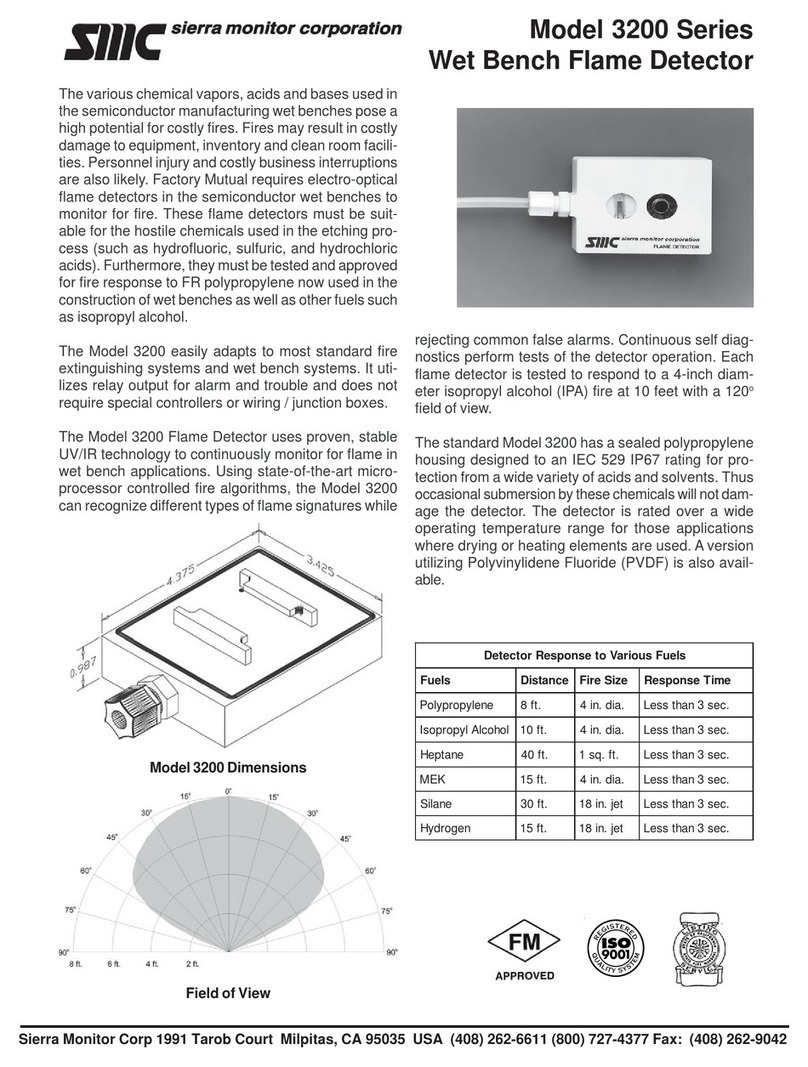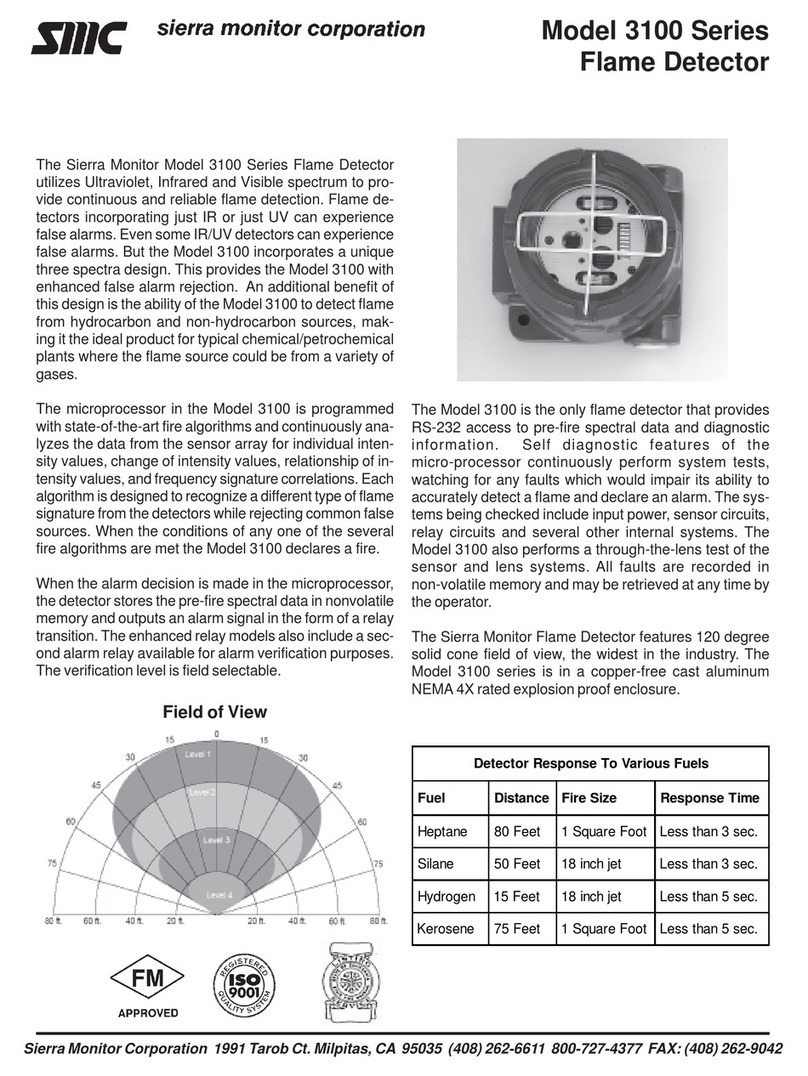
3600I
Page: iv
TABLE OF CONTENTS
1INTRODUCTION.......................................................................................................................... 1
1.1 OVERVIEW ......................................................................................................................... 1
1.2 MODEL AND TYPES .......................................................................................................... 2
1.3 FEATURES AND BENEFITS .............................................................................................. 4
1.4 PRINCIPLES OF OPERATION........................................................................................... 4
1.4.1 HYDROCARBON FIRE DETECTION............................................................................. 4
1.4.2 HEATED OPTICS ........................................................................................................... 5
1.4.3 HART PROTOCOL ......................................................................................................... 5
1.4.4 RS-485 MODBUS ........................................................................................................... 5
1.4.5 PRODUCT CERTIFICATION.......................................................................................... 6
1.5 PERFORMANCE CONSIDERATIONS............................................................................... 6
1.5.1 DETECTION SENSITIVITY............................................................................................. 6
1.5.2 CONE OF VISION........................................................................................................... 8
1.5.3 FALSE ALARMS PREVENTION................................................................................... 10
1.5.4 VISUAL INDICATORS .................................................................................................. 11
1.5.5 OUTPUT SIGNALS ....................................................................................................... 12
1.5.6 DETECTOR STATUS ................................................................................................... 13
1.5.7 AUXILIARY RELAY AS END-OF-LINE RESISTOR ..................................................... 14
1.6 INTERNAL DETECTOR TESTS ....................................................................................... 14
1.6.1 CONTINUOUS FEATURE TEST .................................................................................. 14
1.6.2 BUILT-IN-TEST (BIT) .................................................................................................... 15
2INSTALLING THE DETECTOR ................................................................................................ 18
2.1 GENERAL GUIDELINES .................................................................................................. 18
2.2 UNPACKING THE PRODUCT.......................................................................................... 19
2.2.1 CHECKING THE PRODUCT TYPE.............................................................................. 19
2.3 REQUIRED TOOLS .......................................................................................................... 19
2.4 CERTIFICATION INSTRUCTIONS................................................................................... 20
2.5 INSTALLATION CABLES.................................................................................................. 21
2.5.1 CONDUIT INSTALLATION ........................................................................................... 21
2.6 INSTALLING THE TILT MOUNT (PART NO. 3600I)........................................................ 22
2.6.1 TILT MOUNT SPECIFICATIONS.................................................................................. 22
2.6.2 TILT MOUNT ASSEMBLY ............................................................................................ 23





























